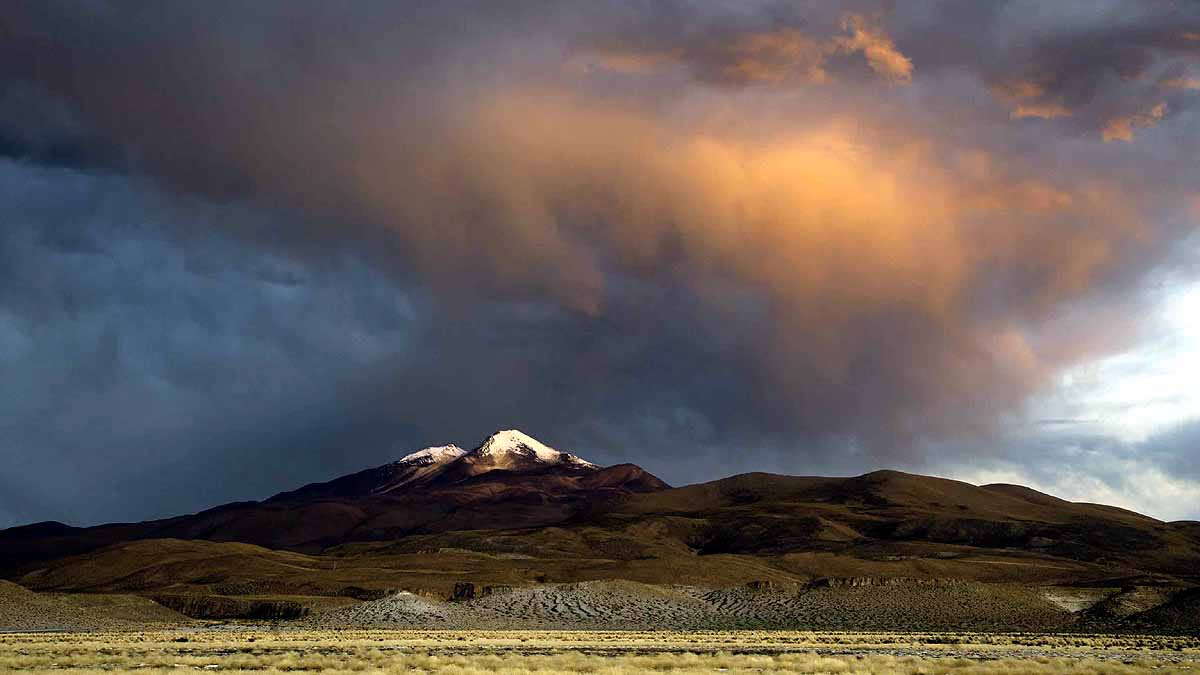In the serene Sur Lipez Province of Bolivia, the long-dormant Uturuncu volcano, inactive for a staggering 250,000 years, is now showing signs of life. Deep beneath its surface, scientists have uncovered activity in magma chambers filled with lava and gas slowly making their way upwards.
Uturuncu: The 'Zombie' Volcano Awakes
Dubbed the 'Zombie' volcano because of its prolonged dormancy yet persistent signs of life, Uturuncu last erupted 250,000 years ago. In recent decades, it has demonstrated seismic activity and gas emissions, alarming signs associated with volcanic unrest.
This reawakening has reshaped its surrounding landscape into a 'sombrero' or hat-like formation, with a rising summit and lowering surrounding lands. Such movements are causing concern among locals, fearing a potential devastating eruption.
An international team of experts from China, the UK, and the USA employed multiple techniques to unravel the mysteries of Uturuncu's subterranean movements.
1. Seismic Tomography
Using data from over 1,700 earthquakes, scientists mapped the volcano's underlying 'plumbing system.' This technology is akin to MRI or X-ray imaging; acoustic waves alter with different earth materials, helping scientists map out solid minerals, hollow chambers, and liquid zones.

Source: aajtak
2. Geophysics and Petrochemical Analysis
Researchers combined geophysical imaging and petrochemical analysis with rock physics modeling, reconstructing volcanic activities. Findings showcased a shallow hydrothermal system beneath Uturuncu, with hot water rising towards the surface.
3. Gas Accumulation and Surface Uplift
A reservoir beneath the crater collects gas, pushing the surface upward at a rate of about 1 centimeter annually, forming the 'sombrero' shape—a central uplift with sinking edges. These dynamics are driven by the movement of gas and fluids, not magma accumulation.
Low Risk of Eruption:
Currently, there’s a minimal chance of an explosion at Uturuncu as ongoing activities relate more to hydrothermal fluids and gases than significant magma build-up.
Mineral Resources:
The research aids in understanding the storage of minerals like copper, with scientists believing that fluids transport and deposit minerals through molten rock, potentially beneficial for technological uses.
Scientific Techniques:
This research demonstrates the power of integrated datasets and techniques to reveal hidden activities in dormant volcanic systems, advising on future evaluations of volcanic threats.
Uturuncu is positioned above the Altiplano-Puna Volcanic Complex (APVC), home to Earth’s largest known magma body. This complex includes numerous volcanoes and calderas responsible for colossal explosions over millions of years. Uturuncu’s activities, though linked to this magma body, predominantly arise from fluid and gas flows via hydrothermal systems.
No Immediate Threat to Local Communities
For those living around Uturuncu, this study reassures of no imminent volcanic threat. However, scientists recommend continued monitoring of other dormant Bolivian volcanoes, which may awaken.
According to Cornell University geophysicist Matthew Pritchard, while volcanoes may appear inactive on the surface, they aren't dormant beneath. Researchers propose applying such techniques to over 1,400 potentially active volcanoes worldwide, assessing their dangers and exploring potential resources.




